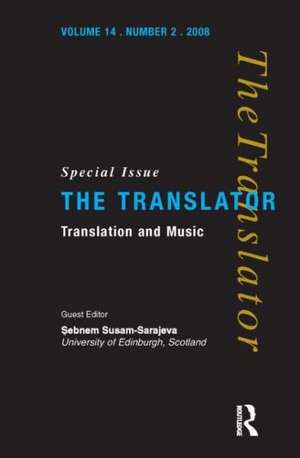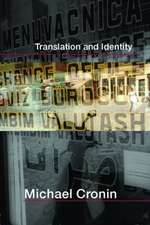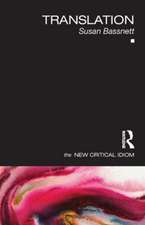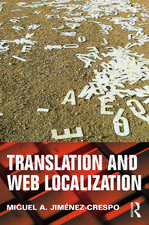Translation and Music
Editat de Sebnem Susam-Sarajevaen Limba Engleză Paperback – 20 oct 2008
Yet the intersection of translation and music can be a fascinating field to explore, and one which can enrich our understanding of what translation is and how it relates to other forms of expression. This special issue is an attempt to open up the field of translation and music to a wider audience within translation studies, and to an extent, within musicology and cultural studies.
The volume includes contributions from a wide range of musical genres and languages: from those that investigate translation and code-switching in North African rap and rai, and the intertextual and intersemiotic translations revolving around Mahler's lieder in Chinese, to the appropriation and after-life of Kurdish folk songs in Turkish, and the emergence of rock'n roll in Russian. Other papers examine the reception of Anglo-American stage musicals and musical films in Italy and Spain, the concept of 'singability' with examples from Scandinavian languages, and the French dubbing of musical episodes of TV series. The volume also offers an annotated bibliography on opera translation and a general bibliography on translation and music.
Preț: 270.61 lei
Preț vechi: 333.04 lei
-19% Nou
Puncte Express: 406
Preț estimativ în valută:
51.79€ • 56.23$ • 43.50£
51.79€ • 56.23$ • 43.50£
Carte tipărită la comandă
Livrare economică 22 aprilie-06 mai
Preluare comenzi: 021 569.72.76
Specificații
ISBN-13: 9781905763108
ISBN-10: 1905763107
Pagini: 282
Dimensiuni: 156 x 234 x 14 mm
Greutate: 0.36 kg
Ediția:1
Editura: Taylor & Francis
Colecția Routledge
Locul publicării:Oxford, United Kingdom
ISBN-10: 1905763107
Pagini: 282
Dimensiuni: 156 x 234 x 14 mm
Greutate: 0.36 kg
Ediția:1
Editura: Taylor & Francis
Colecția Routledge
Locul publicării:Oxford, United Kingdom
Public țintă
PostgraduateCuprins
Translation and Music: Changing Perspectives, Frameworks and Significance, pp. 187-200Sebnem Susam-Sarajeva (University of Edinburgh, Scotland)
Descriere
Popular and multimodal forms of cultural products are becoming increasingly visible within translation studies research







